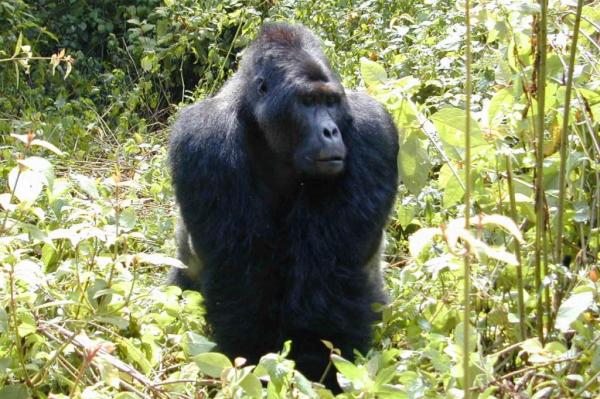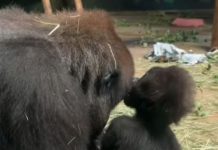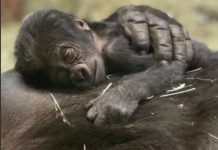
KINSHASA, Democratic Republic of Congo, April 4 (UPI) — Since the 1990s, the Democratic Republic of the Congo has been plagued by a succession of bloody civil wars. The human cost, of course, has been tragic and tremendous. Some estimates put the death toll at upwards of 5 million.
The violence has also had ecological consequences. New research suggests the nation’s population of Grauer’s gorillas has been decimated by the ongoing human conflict. Formerly known as the eastern lowland gorilla, Gorilla beringei graueri, is world’s largest primate and is only found inside the DRC.
In 1998, there were an estimated 17,000 Grauer’s gorillas in the Congo. Today, there are fewer than 3,800 — a 77 percent drop.
“The crash in the gorilla population is a consequence of the human tragedy that has played out in eastern DRC,” Jefferson Hall, staff scientist at the Smithsonian Tropical Research Institute, said in a news release. “Armed factions terrorize innocent people and divide up the spoils of war with absolutely no concern for the victims or the environment.”
Violence in the DRC was first triggered by the Rwandan genocide of 1994, which saw hundreds of thousands of refugees pouring into the Congo. The influx of people exacerbated tribal tensions, sparking civil unrest and violence. The war ended in 2003, but fighting between rebel and government forces continued off and on for several more years. Currently, a tenuous peace hangs over the country.
While ethnic differences are often blamed for the violence, much of the conflict has concerned the control of mineral rights. The DRC is rich in minerals like coltan, used in electronics.
With violence disrupting daily life in many cities and villages, the Congolese have turned to artisinal mining to support themselves and their families. Much of this mining takes place in remote forests, some of them protected gorilla habitat. In addition to destroying gorilla habitat, miners also hunt the primates for bush meat, as do local fighters.
To get a sense of the ecological damages these activities have caused, researchers with the Smithsonian Institution tapped into local communities and park rangers for the most up-to-date estimates on gorilla populations. Their findings are detailed in a new report.
“Human dignity and welfare are inextricably linked to the dignity and survival of wild animals like Grauer’s gorilla and the ecosystems that sustain them,” said lead author Andrew Plumptre, a conservationist with the Wildlife Conservation Society.
“The outcomes of regional armed conflict have global impact on our survival. The activity of armed militias controlling mining camps in the Grauer’s gorilla heartland is likely to eliminate the Grauer’s gorilla entirely.”
Plumptre and his colleagues believe the Union for Conservation of Nature’s Red List of Threatened Species should change the gorilla’s status from “endangered” to “critically endangered.”
“The bright spot in all this is that we have seen, over and over again, dedicated Congolese conservationists risk their lives to make a difference,” Hall said. “Thanks to these individuals, there is still hope and the opportunity to save these animals and the ecosystems they represent.”





